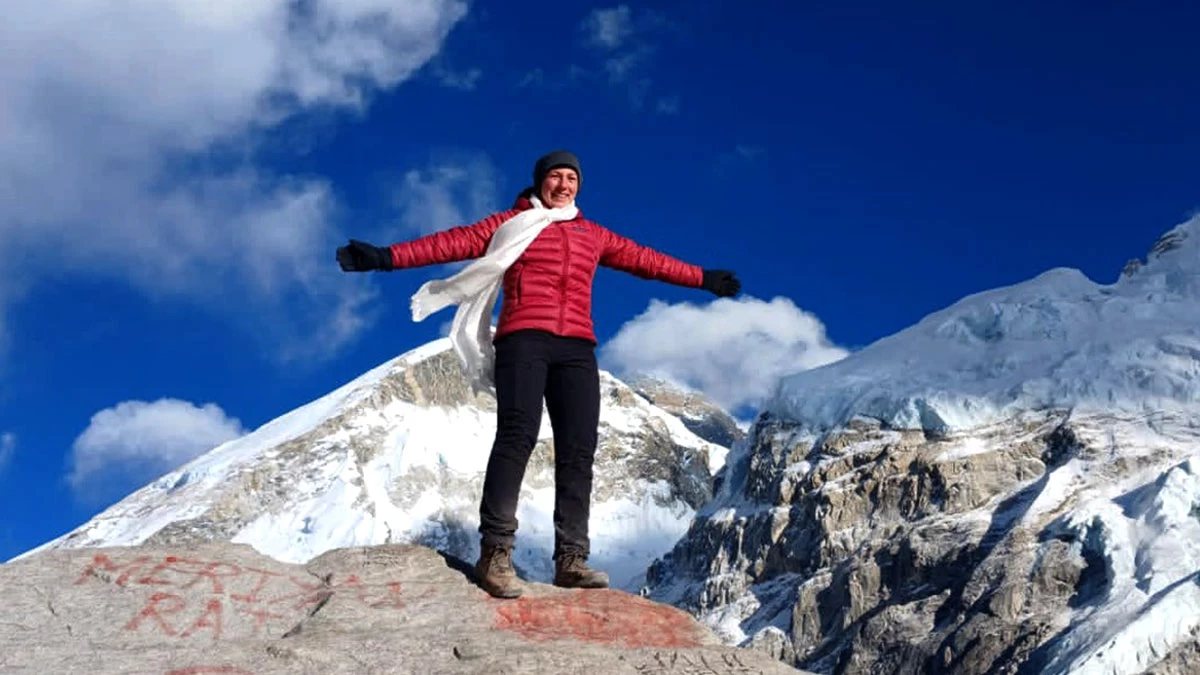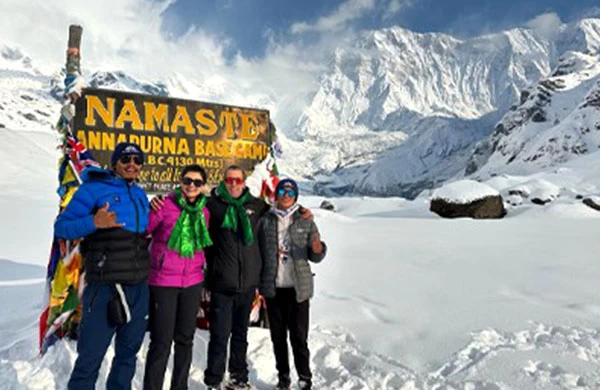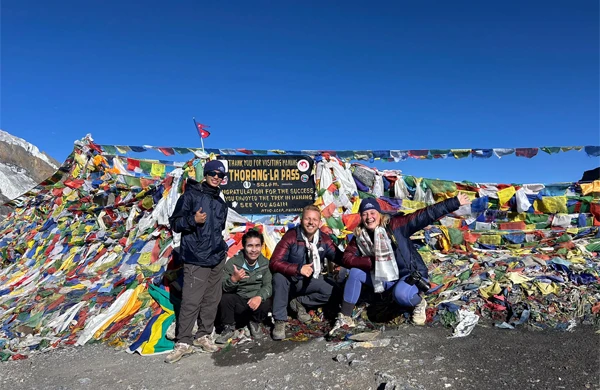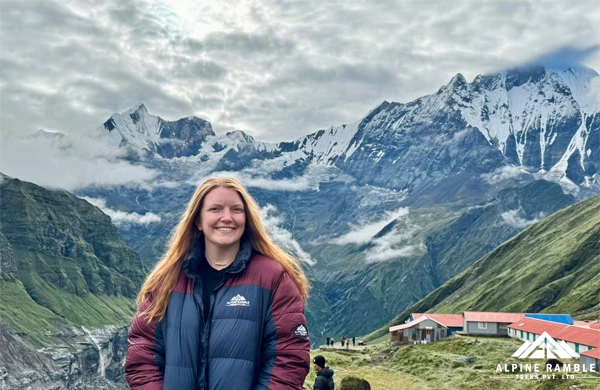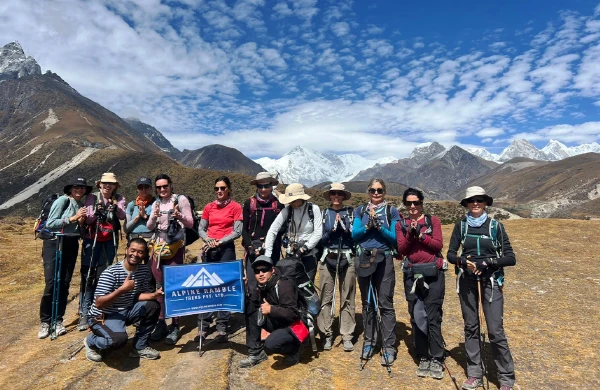Is the Everest Base Camp Trek dangerous?
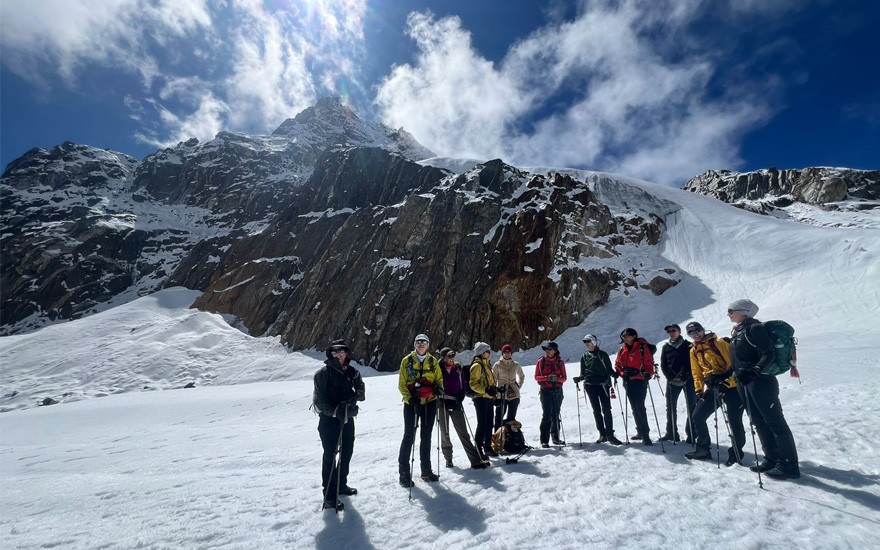
The Everest Base Camp is a very known trekking destination among the trekkers all around the world. A lot of trekking enthusiasts have this on their bucket list. Located at an elevation of 5,364 m (17,598 ft) above sea level in eastern Nepal, the Everest Base Camp Trek takes anywhere from 12 to 16 days to complete the trek. It is one of the highest locations on earth and the gateway to actually the highest point on earth, which is Mount Everest.
You might be planning a trek to the base camp in a couple of months, next year, or in the near future. You also must have many questions that need answering. And one of the questions is that most people who are planning for this trek are curious about one thing, and that is, Is the Everest Base Camp Trek dangerous? Or is the Everest Base Camp safe for trekking?
To answer this question, yes, trekking to the Everest Base Camp can be challenging and dangerous if a proper plan and preparation are not done. Therefore, on this blog we will talk about what makes the Everest Base Camp Trek challenging but also how to avoid such challenges and get the best trekking experience with maximum safety.
The Challenges of the Everest Base Camp Trek
Altitude Sickness
Altitude sickness is a very common illness that trekker’s experience during trekking at higher elevation. There are phases to the altitude sickness, and they can range from a mild headache to heavier symptoms. There are three known altitude illnesses, and they are as follows:
Acute Mountain Sickness (AMS)
Acute mountain sickness, or AMS, is the most basic form of altitude sickness and usually shows symptoms such as loss of appetite, headache, nausea, inability to sleep, and so on. This happens because our body is not properly adjusted to the high altitude and lower level of oxygen.
The best way to avoid AMS is to do proper acclimatization while trekking to the Everest Base Camp. On a standard itinerary, there are two days extra for acclimatization, one extra day at Namche Bazaar and another at Dingboche.
High Altitude Cerebral Edema (HACE)
High Altitude Cerebral Edema (HACE) is a severe form of altitude sickness. If the symptoms of AMS are ignored and the person continues to ascend, the symptom worsens, and as a result, the brain starts to swell. The symptom changes to the person having erratic behavior such as hallucinations, loss of coordination, confusion, etc. If not treated ASAP, it can lead to a possible coma or even death.
Despite the medication and supply of supplementary oxygen, the best way to treat HACE is to descend at least 1000 meters immediately.
High Altitude Pulmonary Edema (HAPE)
Like HACE, High Altitude Pulmonary Edema (HAPE) is another life-threatening sickness. As a matter of fact, it can be even more dangerous than HACE because, while HACE occurs only when AMS symptoms get worse or untreated, people can suffer from HAPE independent of AMS.
In High Altitude Pulmonary Edema (HAPE), fluids start to accumulate in the lungs because of changes in pressure and low oxygen levels. The person comes down with a horrendous cough, extreme fatigue, and most of all, chest pains and trouble breathing.
In order to combat this, along with immediate medical attention, the person should be descended down as soon as possible. Similarly to HACE, despite the medications, descending is the best way to ensure the safety of the person suffering from this sickness.
Rugged Mountain Landscapes and Trekking Trails
Trekking it itself is a demanding activity. Trekking to the Everest Base Camp, the gateway to the summit of the world’s tallest mountain, is not an easy feat to achieve, though it’s not particularly hard either if done the right way. However, you should not underestimate the trails of the mountains. The constant uphill on some part of the trek will have you questioning your life choices, which further doubles down with the increase in elevation. And your knees will feel every step when you’re descending as well.
But one of the best parts of the trek is that you will forget about all your struggles once you reach the destination and see the majestic view of the mountains. And to make sure you do not suffer as much; you need to do training and exercises a month prior to your trek. This way, you can enjoy the trek without feeling pain in your legs. Especially for first-time trekkers, it is highly recommended to train your body because you will be walking anywhere from 5-8 hours a day on this trek.
Unpredictable Mountain Weather Conditions
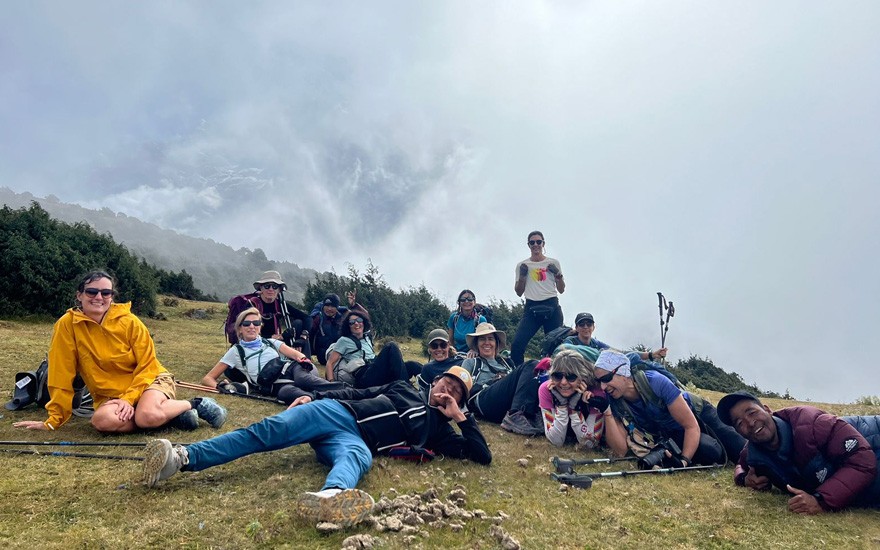
Mountains, especially the Himalayas, are known to have very unpredictable weather patterns. There is a reason why trekker’s are urged to check in before it becomes dark. The higher you go, the harsher the weather. The most common thing to experience on the mountains is the extreme wind. Once the day crosses the afternoon, the wind begins to blow, which not only increases the cold but also makes it difficult to breathe.
The sunny weather can instantly turn into a sky full of dark clouds, ready to strike up a rain or snowstorm. Therefore, it is extremely crucial to check the weather forecast from a trusted source before embarking on the trek. Because should anything happen during a rain or storm, getting medical help will be very hard considering the weather and the landscape.
Natural Calamities
Nepal is a country rich in natural resources, from rivers to mountains. The diverse landscape makes it even more prone to different types of natural disasters every year. With the hilly and Himalayan regions, some of the most common natural disasters are floods, landslides, avalanches, and earthquakes. Floods and landslides occur mostly during the monsoon season, where it rains heavily for days on end, increasing the flow of the river and making the soil of the hills weak, which causes the landslide.
While avalanches are more prone when there is fresh snow or the mass of snow and ice is disturbed by an external force. For floods and landslides, it is best to avoid trekking during monsoon season or be extremely careful. Avalanches are more of a threat to mountain climbers, but one cannot be too careful in the mountains. An earthquake, however, is something that cannot be predicted as accurately, but knowing the basics of what to do when the earthquake strikes is useful knowledge to have.
Rockfall and Crevasse
The geography of Everest is very rocky. More often than not, you will be walking directly under a rocky mountain and areas prone to rock fall. You have to be very careful and aware of your surroundings at all times. Crevasses are also very common in some parts of the trail, especially at the base camp, where you will be walking on mountain glacier paths. They are not easily visible, which can cause a person to fall between them and injure themselves. Staying vigilant is the best approach in areas that are labeled as a risk.
Hypothermia, Dehydration, and Frostbite
Catching hypothermia in the mountains is very easy. When your regular body temperature drops 2-3 degrees, you will start showing symptoms of hypothermia, such as extreme shivering and cold, and in the extreme case, even death. Keeping yourself warm is very important; therefore, one must know about layering clothes during the trek to avoid such conditions.
Dehydration is the loss of water from the body. During the trek, we strain our body to the maximum, and as a result, our body loses water. One of the most common symptoms of dehydration is headaches and muscle cramps. Drinks such as coffee and alcohol dehydrate the body, so a person should instead drink regular water anywhere from 3 to 4 liters a day.
During extreme cold, if our body is not protected enough, it may succumb to frostbite. It is most commonly seen in our fingers and toes. The cold temperature and high altitude limit the flow of blood evenly to our body parts, which results in freezing of our organs. The early stages of frostbites can be treated, but severe frostbites can result in amputation. To avoid such circumstances, keeping warm is the best method.
Medical Emergencies and Rescue
Everest Base Camp is a remote location; there is no road access, making it very hard to transport goods. Most people depend on human labor and mules to transport the goods. Helicopters are also used for transporting people as well as goods, but they can be very expensive.
And because the transportation facilities are very poor, medical emergencies have no other way to be treated unless helicopter rescue is issued. There are also limited health posts, and they are not equipped to treat severe situations. Therefore, being mindful of your own health is very important.
Getting Lost in the Trail
The trail to the Everest Base Camp Trek is one of the most walked trekking trails in Nepal. Knowing the route beforehand and having the map of the trail is important. Some solo trekkers have a tendency to wander away without any prior study of the route, which gets them lost. There are many solo trekkers who have gotten lost, and while many of them have been found, some still remain missing.
So, even if solo trekking is allowed, we recommend hiring a guide to accompany you for your own safety. During the trek, there is always a chance you will be completely alone on the trail, which can be quite dangerous and make you lose your way, resulting in getting lost.
How to lower or minimize the risks and dangers during the trek to Everest Base Camp?
There are always risks and dangers in everything we do, no matter in the safety of our own home or when we are trekking 5000 meters above sea level. The only difference is the level of dangers we are exposed to. There is no telling if or when a disaster might occur, but being ready for any scenario is the best we can do. Here are all the ways you can minimize the risks and dangers and maximize your safety during the Everest Base Camp Trek:
Acclimatization
Acclimatization means to let our body adjust to a new environment to which we are normally not exposed. And in this case, it is the altitude and the lower level of oxygen. Trekking to the Everest Base Camp is not only challenging in terms of having to hike a rugged landscape for 6–8 hours but also the gain in elevation where the higher you climb, the lower the oxygen level will be. Thus, it is essential for our body to adjust properly to the high altitude in order to avoid getting altitude sickness.
As discussed above, there are three levels of altitude sickness: AMS, HACE, and HAPE. They are all avoidable if we give our body a chance to acclimatize properly. And in order to do that, we should maintain a steady pace in our hike and stay in certain places an extra day so our body will be used to the environment.
Training and Preparation
Trekking to the Everest Base Camp is considered moderately challenging. It is also suitable for beginner trekkers who are just venturing out in the world of adventure. However, having prior trekking experience is a good thing to have because, despite it being a moderately challenging trek, people often underestimate what it takes to successfully complete the trek without getting into any complications.
Being physically fit is one of the most important parts of trekking. You will need good stamina to keep up with hours of walking and other physical strain that the body experiences. Training for the trek should begin at least one month prior, where cardiovascular exercises should be the primary focus.
Emergency Rescue and Insurance
One of the most important things to consider before embarking on an adventurous journey such as the Everest Base Camp Trek, is getting insurance that covers the emergency helicopter rescue, medical and accidental emergencies as well. You should get the insurance from a company registered in your own country. Without good insurance, you will not be able to do the trek, as it is mandatory. And in instances of emergencies, your insurance company will step up and take care of the situation.
And for further clearance, your insurance for the helicopter rescue must cover at least 6,000 meters. You need to be clear on the maximum elevation of your journey and state it accordingly, or else proper rescue cannot be done.
Equipped with proper clothes and gear
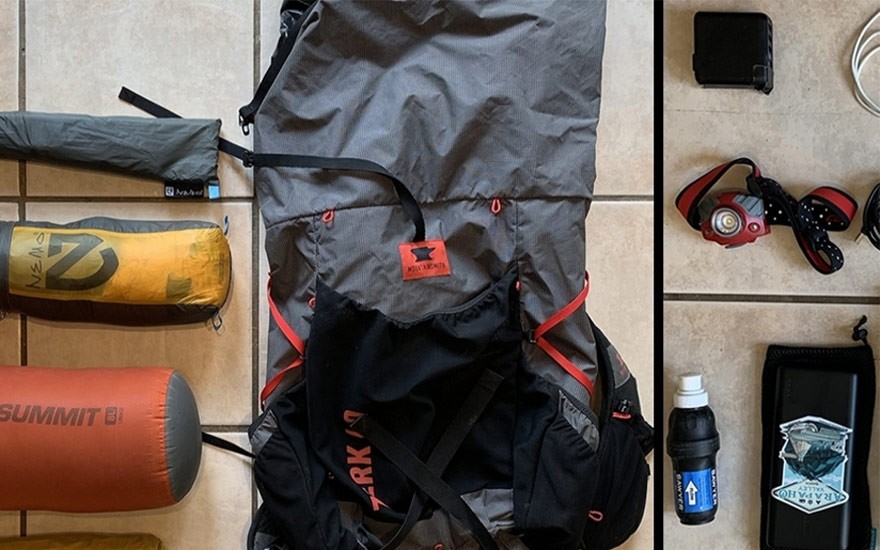
One of the things most people often tend to neglect are the clothes and gear that are required for trekking in the mountains. Casual clothes that we wear in the city area will just not cut it for the extreme weather of the mountains. Therefore, clothing that is specifically made for trekking is required. Not only are they light but also multifunctioning, which keeps us warm and comfortable through the entire trek.
Even a small gear makes a huge difference. From shoes and socks to the backpack we carry, it needs to be of good quality and functional that assists us in our trek. If we are not carrying proper gear and equipment, we will be susceptible to the risks of getting AMS, frostbite, mountain cough, and so on. So, it is very crucial to have well-functioning and good-quality trekking gear and equipment.
Basic First-Aid Knowledge
Trekking in the mountains sometimes comes with bumps and bruises as well. It won't be anything life-threatening, but sometimes we just step on an uneven path and slip, getting a bruise or even a sprained ankle. Or along the way one might catch a stomach bug or even catch a fever, and in those circumstances, we must have proper knowledge of what to do. Carrying a first-aid kit that is filled with some painkillers, ointments, rubbing alcohol, bandages, etc. is essential. These basic medicines can come in quite handy in case of emergencies.
Diet and Hydration
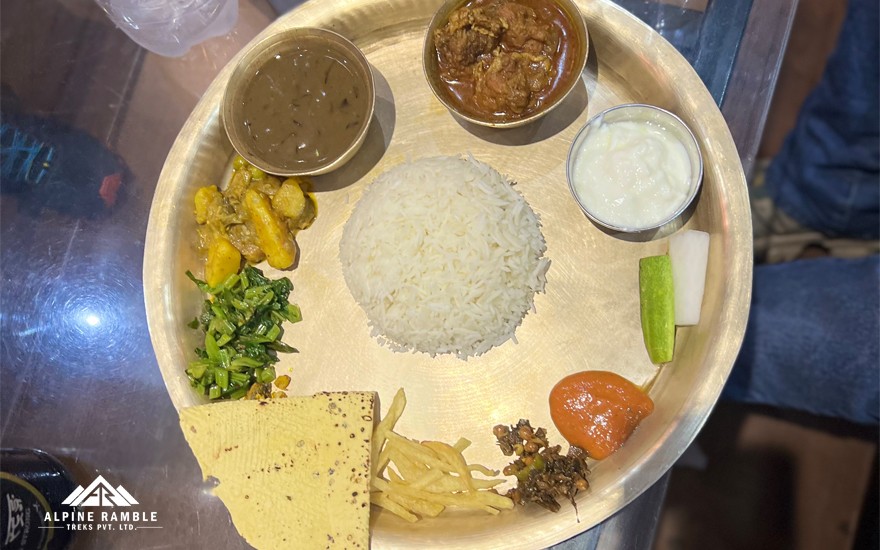
If your body does not get a proper diet and is not hydrated enough, it cannot perform to its full extent. Even before trekking, we must maintain a proper diet that is full of protein, fiber, and carbs that will give us enough energy to prepare and drink at least 3-4 liters of water daily. And during the trek, it is even more important to maintain this diet. Even though you will be tempted to get meat during the trek, it is recommended not to because the freshness of the meat cannot be determined and might cause stomach problems later on.
And instead of western food, for one meal you should eat Dal Bhat, as it is rich in carbs and gives you energy for the long hours of trekking. It is best to avoid coffee and alcohol, as they dehydrate your body, and alcohol can even trigger altitude sickness. Keep your body hydrated throughout the day, as dehydration can cause headaches and muscle cramps.
Weather Forecast
The weather in the mountains can be very unpredictable; a sunny day can turn into a gloomy one with clouds, rain, and snow in an instant. It is not always the case but also is not something that can’t happen any given day. Therefore, being prepared for such circumstances with windproof and rainproof jackets, raincoats, and a few sets of warm clothes is important. Getting wet during the trek is one of the worst things anyone can experience, especially if the clothes inside the bag get wet.
Thus, each day before beginning the trek, checking the weather forecast and preparing for the day accordingly is important. This will help to avoid some not-so-pleasant situations during the entire trip to the Everest Base Camp.
Trekking Season and Time-table
Different seasons offer different scenes during the trek. All four seasons can be done for the EBC trek, but some are just more suitable than the others. For example, spring and autumn are the most suitable seasons for trekking, as the weather and temperature are more favorable, offering a clear view of the mountains. The winter season, despite being a tad bit colder, also offers some of the clearest views of the mountains. In fact, if you are well prepared for the cold, it is one of the best times to visit, and the best part is it won’t be as crowded. Summer or monsoon is not preferred by many because of the rain.
Having a strict timetable during trekking is important. From the time you begin your day to the time it ends should be at a specific time. It is best to start your trek early and reach your destination early while there is still daylight. Unless it is unavoidable, never trek once it gets dark, so plan your day where you reach your destination till late afternoon. There are many dangers of hiking in the dark, from possible attacks of wild animals to getting lost. It is not something to take lightly.
Choose an Expert Company
There are hundreds of companies ready to take you on a journey to the Everest Base Camp, but choosing just any company can lead to a not-so-pleasant experience. Therefore, you must study a company’s reputation and feedback from other clients and choose accordingly.
A professional company will not only give you a good package but also provide you with the best guides and porters for your trek and, above all, put you as the top priority while traveling, listen to all your requests, and work hard to provide you with the best trekking experience without any problems.
Final Say
We hope this article has been a good source of information for you. Planning a trek to the Everest Base Camp can be very overwhelming, and rightfully so. But with proper knowledge and information, it can be very easy and smooth. If you have any more questions, please feel free to reach out to us via WhatsApp +977 9851175531 or email us at info@alpineramble.com

